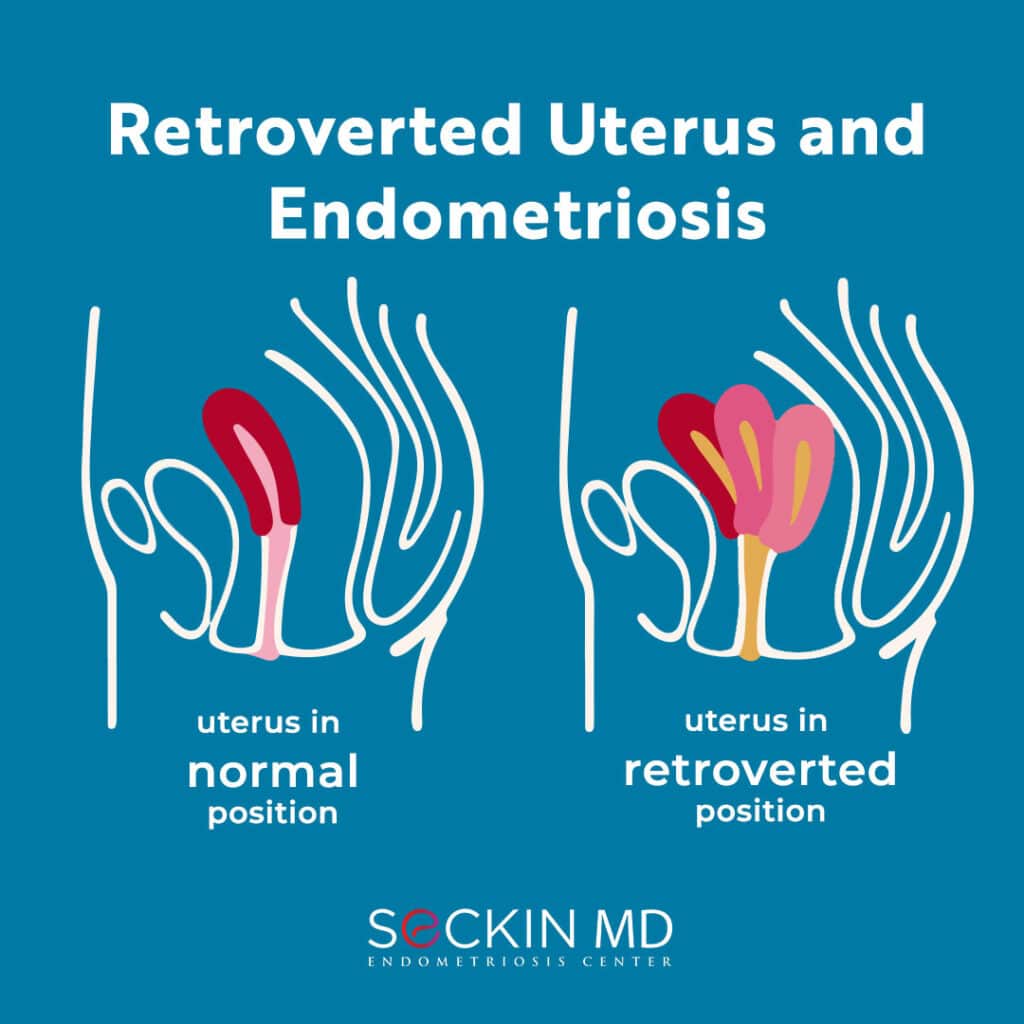Retroverted or Tilted Uterus and Endometriosis

Endometriosis
A retroverted uterus, or a tipped or tilted uterus, is an anatomical variation in which the uterus is tipped back at the cervix towards the tailbone or rectum. The condition affects around one in five women.
What causes a tilted uterus?
Women can have a tilted uterus either from birth or develop the condition later. Common factors that may cause it include:
- Developmental variations where the uterus may become tilted during development or as the individual matures. Menopause can also lead to a tilted uterus as ligaments holding the uterus in place gradually weaken with age.
- Adhesions and scarring due to pelvic surgeries such as Cesarean deliveries, pelvic inflammatory disease, or infections can pull the uterus to a retroverted position.
- Uterine fibroids or endometriosis can alter the shape and position of the uterus and cause it to shift.
- Pregnancy and childbirth may cause stretching of the ligaments that hold the uterus and can result in the uterus not returning back to its original position.
How can endometriosis lead to a tilted uterus?
In endometriosis, endometrial tissue develops outside the uterus. This tissue can cause adhesions and scarring, which could “glue” the uterus to other organs causing retroversion or tilting.
Women with endometriosis are more likely to have a tilted uterus and vice versa though the exact cause of this is not clear.
Endometriosis together with a retroverted uterus can result in painful sex (dyspareunia) and painful periods (dysmenorrhea).
How is a tilted uterus diagnosed?
Your doctor can examine the positioning of your uterus and cervix and determine the direction and degree of the tilting.
What are the consequences?
A tilted uterus can contribute to dyspareunia or painful dysmenorrhea. It may also overlap with symptoms of irritable bowel syndrome (IBS) that include constipation, back pain, and painful bowel movements. There is no link between a retroverted uterus and infertility or difficulties during pregnancy.
How do doctors treat it?
If a retroverted uterus is an incidental finding, then, there is no treatment available.
If there is suspicion of an underlying condition such as fibroids, endometriosis, or scarring, the treatment of these conditions can allow the uterus to get back to its normal anteverted position.
Pessaries can work as a short-term solution to bring back the uterus to its normal position. However, they may cause a significant risk of infection and inflammation. They also do not alleviate symptoms of painful sex.
Uterine suspension or uterine repositioning laparoscopic surgery is a semi-permanent way to reposition the uterus and can provide pain relief. If the tilting is due to endometriosis, laparoscopic deep excision surgery is the gold standard for identifying and removing all lesions, adhesions, and scarring. Doing so, can restore the uterus to its anteverted position.
Do you have a tilted uterus? How has this affected your life? Please share your story by leaving a comment on our post on Facebook or Instagram.
Get a Second Opinion
Our endometriosis specialists are dedicated to providing patients with expert care. Whether you have been diagnosed or are looking to find a doctor, they are ready to help.Our office is located on 872 Fifth Avenue New York, NY 10065.
You may call us at (646) 960-3080 or have your case reviewed by clicking here.